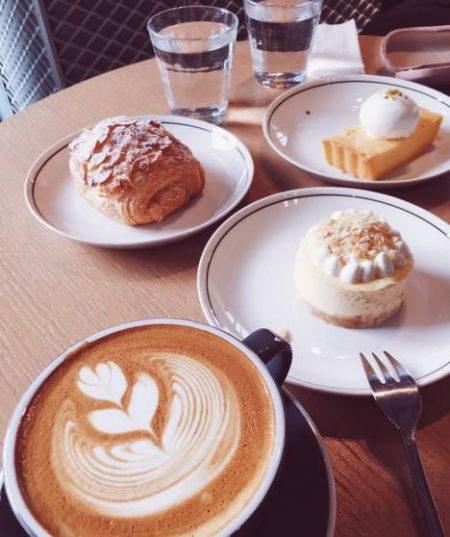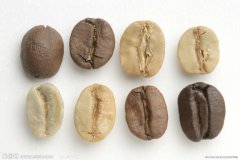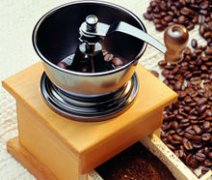Understand coffee professional words and nouns about coffee
Arabica coffee: one of the three original varieties of coffee, the other two are Robusta and Liberika. Among the three original species, Arabica has the best quality, but it is also the most susceptible to Fusarium wilt during cultivation. Mainly planted in the plateau areas of South America, America and Asia.
Chen Dou: raw coffee beans that have been stored for about 3 years after picking. Low water content, also known as old coffee beans, old coffee beans and so on.
Pure coffee: coffee brewed from a single kind of coffee beans.
Large and full: a marking of coffee specifications led by African native coffee beans. It means large and full high-quality coffee beans.
Tannin (Tannin): commonly known as "tannin acid", to put it simply, it is the source of the astringency of coffee. The production of tannins will be particularly significant when the extraction is excessive. Tannins can promote gastric juice secretion and eliminate free radicals.
Flavor detection: a flavor test that identifies the quality of coffee, and the appraiser is called a flavor tester.
Non-washed coffee beans: coffee beans processed by natural drying of the sun. Also known as natural coffee beans.
Flavored coffee: coffee with a variety of different flavors, which also refers to coffee with a partner.
Colombian coffee beans: a general term for 3 domestic coffee beans from Colombia, Tanzania and Kenya. High quality washed Arabica coffee beans. A method of classification of origin in the international market for coffee.
Nutty: coffee taste term. The aroma of roasted coffee beans.
Hand pick: the job of selecting coffee beans by hand.
Dutch coffee: a kind of dripping coffee. Pour water into the finely ground coffee powder and extract slowly. The coffee extraction method invented by the Indonesians in the Dutch colonial era is called Dutch coffee.
Roasting: the process of roasting coffee, also known as fried roasting.
Roaster: a roaster is a machine for roasting coffee beans. A roaster refers to the roasting staff of coffee beans.
Red wine taste: coffee taste language. Similar to the flavor of red wine.
Siphon pot: a tool for extracting coffee by air pressure invented by British technician Robert Napier in 1940.
Mixed coffee: coffee brewed from a mixture of various coffee beans.
Processing: the process of extracting coffee beans from coffee fruit. Remove the outer skin, pulp, endocarp, silver peel, etc. There are mainly two processing methods: washing type and natural drying type.
Boutique coffee: high-quality coffee beans grown in an ideal environment with its native flavor. There are boutique coffee associations in all countries, and there is no strict definition of boutique coffee.
Caramelization tester (Agtron): this is the baking degree index used in the United States. The baking degree is expressed by the value of "baking degree is about Agtron 50" from the shallowest 100 to the deepest 25. The determination is based on a characteristic difference instrument called Agtron M-Basic.
Coffee filter pot: a circular coffee extraction tool originated in the United States. Easy to operate and often used outdoors.
Coffee skin: the name of a coffee endocarp compared to parchment. Coffee beans with coffee skins are called parchment coffee beans when dried. The adhesion of the coffee skin will not have much effect on the flavor of the coffee, and the taste of the shelled coffee bean is mellow. In some places, coffee beans with coffee skins can also be traded.
Barista: a professional service staff in a coffee shop. In Japan, the Japan Fine Coffee Association operates a barista qualification system aimed at its members.
Coffee substitute: a drink made of ingredients other than coffee that tastes similar to coffee. During the war, alternative drinks for coffee were made from soybeans, lily roots, chestnuts and shrubs. The most common is "dandelion coffee", which is a healthy drink made from the dried roots of dandelion. Another kind is "black bean coffee", which is made from roasted black beans, which is very effective in treating stiff shoulders and cold syndrome.
Caffeine (Caffein): a bitter alkaloid found in plants. In addition to coffee, tea also contains caffeine. It mainly has the functions of exciting, diuretic, cardiotonic and so on. The caffeine intake is oxidized and converted into uric acid in the body, which is conducive to excretion.
Coffee cherry: the fruit of coffee that is red when ripe and named because it looks like a cherry.
Coffee planting belt: between the equator and the Tropic of Cancer, the area suitable for coffee cultivation (roughly between latitude 25 °north and latitude 25 °south) is also known as the coffee planting area.
Cariomon: a traditional custom of coffee held in Ethiopia similar to the Japanese tea ceremony. Also known as the coffee celebration.
Kalita filter cup: a commonly used representative filter cup. There are three filters at the bottom, which are not easy to be blocked to ensure the smooth progress of coffee extraction. In addition, the single-hole filter cup with only one filter at the bottom is invented by Mrs. Melita in Germany, which is called Melita Cup. Coffee powder is used to serve coffee for a few people. The two tastes are compared.
Cocoa: dried coffee fruit. A defective bean that is mixed with cocoa coffee and produces a bad smell when brewed. Cocoa means excrement.
Fusarium wilt: the disease name of coffee leaves. The infection rate is high. Sri Lanka has switched to black tea because of Fusarium wilt of coffee. Plum rain season is frequent, the cause is mainly attached to the coffee leaves, and then spread.
Liberian coffee: one of the three original varieties of coffee. Liberica coffee native to western Africa having larger fruit than Arabica and Robusta. Mainly planted in lowland, strong adaptability to the environment, should not be infected with diseases and insect pests. The bitter taste is rich, with a diamond at the top. Today, it is only grown in some areas such as Liberia and Suriname.
Filter cloth: a filter cloth used in a follicle instead of filter paper. The method of coffee extraction using filter cloth is called follicular type. This extraction method can fully extract the unique flavor of coffee.
Follicular coffee: coffee extracted with filter paper or cloth.
Filter: a filter used to screen coffee beans according to their size. The larger the filter value is, the larger the screened coffee beans are.
Chlorogenic acid: a tannin in coffee that is the basis of coffee flavor. It is good for health and has attracted a lot of attention in recent years.
Robusta coffee: one of the three original varieties of coffee. Native to the Congo of Africa, a variety of Canibra. Planted in the lowlands, the flavor is not as good as Arabica. It is often used to make instant coffee. The sour taste is weak and the bitter taste is strong.
Lao Dou: raw beans that have been harvested for more than a year and have low moisture content. As opposed to the new beans (New Crop) that were listed in the same year and the "old beans" (Past Crop) that were only listed the following year.
Merita filter cup: a follicular coffee extraction tool using filter paper. It was invented by Merita, formerly in West Germany. There is only one filter hole at the bottom of the filter cup. During the extraction, the boiled water is spirally dripping, and the extraction effect is good.
American coffee: a light roasted coffee that is popular in the United States and similar to tea in Japanese eyes. When drinking, without sugar and cream, coffee taste is light, you can drink more.
Bean grinder: a tool for grinding roasted coffee beans. It can be divided into two types: electric bean grinder and manual bean grinder.
Wood taste: coffee taste term. A flavor of coffee similar to that of trees.
Milk foam: milk foam formed on the surface when espresso is extracted.
Milk foam machine: a device for making milk foam. There are two kinds: manual and electric.
Endocarp (Partchment): thin brown skin sandwiched between pulp and silver. Coffee with an endocarp is called "shelled beans". It can reduce the deterioration of coffee flavor, so it is traded and stored in the form of pericarp coffee in more coffee-producing countries.
Tasting: when testing the flavor, taste the coffee in your mouth.
Flat beans: common coffee beans, two symmetrical coffee beans in coffee fruit, called flat beans because of their flat faces.
Grass flavor: coffee taste term. Used to express the flavor of coffee similar to the smell of grass.
Green beans: the abbreviation of green coffee beans, that is, raw beans.
Certified coffee: coffee certified by a public institution, which also refers to a coffee product with a certified certificate.
Santos: the world's largest coffee distribution port in the Brazilian state of Sao Paulo. Synonymous with Brazilian coffee, people will think of Brazilian coffee when it comes to Santos. In addition, the port of Moka in Ethiopia is also famous all over the world as a distribution port for coffee.
Sieve hole: the step of unifying the size of coffee powder particles, also refers to the sieve pore size. In addition, it can also refer to the thickness of coffee powder.
Screen: a round screen for screening foreign bodies after picking. It means "sieve" in Portuguese.
Raw beans: raw coffee beans with commercial value after finishing the coffee fruit. Also known as green coffee beans.
Double roasting: roasting coffee beans twice. The water content of coffee beans is uniform, the difficulty of baking is reduced, and the flavor and taste of roasted coffee beans are stable.
Frost damage: damage to coffee caused by frost. In Brazil, frost damage is prone to occur around August due to cold southerly winds. Coffee-related people pay special attention to Brazil at this time of year.
Washed coffee beans: washed coffee beans, processed finely, rarely mixed with defective beans and foreign bodies. Most coffee-producing countries process coffee beans in this way.
Characteristic cappuccino: compared to "cappuccino used to eat", it refers to cappuccino with a lot of milk foam.
Turkish coffee pot: a coffee pot used to extract Turkish coffee. The texture is copper or brass with a long handle. In Turkey, this kind of coffee pot is generally called "Jiabei".
Soil taste: coffee taste term. Used to express a rustic taste similar to that of clay.
Wristlet: a special term for espresso. End the extraction ahead of time and extract only the most delicious and essential parts of espresso.
Immature beans: immature coffee beans, meaning green coffee beans. Brewing coffee mixed with immature coffee beans will produce a disgusting smell of grass.
Seattle coffee shop chain: offers a variety of coffee drinks led by espresso, originated from the Seattle coffee chain. Among them, Starbucks and Taris are very famous.
Defective beans: defective beans such as immature beans mixed with raw beans. There are black beans, moldy beans, immature beans, insect beans, dead beans, shell beans, fermented beans and other kinds. The blending of defective beans will affect the taste of coffee.
Small coffee cup: a coffee cup used in drinking espresso. The capacity of the ordinary coffee cup is 150~~200ml, and then the capacity of the small coffee cup is 70~~90ml.
New beans: coffee beans picked that year that have been stored for months. It is dark green with a lot of water content. Because of its rich ingredients, it is generally believed that the flavor and aroma of new beans are good in recent years.
Tablet pressing: props used when putting coffee powder into a filter and commonly used in making espresso.
Grinding: the process of grinding roasted coffee beans into coffee powder. An important part of determining the taste of coffee.
Espresso: Italian coffee. It means express in Italian. Using very fine ground coffee powder, the essence coffee is extracted instantly under steam pressure.
Espresso bar: an Italian coffee bar that offers a series of coffee led by espresso. Coffee bar for short.
Yuanyang Coffee: a popular coffee drink in Hong Kong. A mixed drink of coffee and black tea, alias black tea coffee.
Organic coffee: pay attention to human health and environmental protection, do not use pesticides and fertilizers to grow coffee beans. It also refers to coffee brewed with organic coffee beans.
Pre-roasting: dry raw coffee beans, remove moisture, and use them to ripen within a certain period of time. When the water content of coffee beans is stable, it becomes easier to bake. The taste of roasted coffee will also become mild.
Round beans: round beans are round and special in shape, and their taste is not much different from ordinary coffee. There are usually two coffee beans in the coffee fruit, and there is only one coffee bean in the immature coffee fruit. This coffee bean is called round bean. The output of round beans is small and precious.
Crop: it can refer not only to the yield of coffee beans, but also to coffee beans themselves.
Shelter trees (Shadow Tree): used to avoid direct sun exposure of coffee trees, planted among coffee trees, usually bananas or mango trees. In the past, it was also used to disperse the frost and pest hazards of coffee.

Important Notice :
前街咖啡 FrontStreet Coffee has moved to new addredd:
FrontStreet Coffee Address: 315,Donghua East Road,GuangZhou
Tel:020 38364473
- Prev

An introduction to Coffee from individual Coffee to mixed Coffee
Enjoy unlimited coffee taste, if you like coffee, you must be constantly looking for your favorite beans; if you know the flavor and characteristics of individual coffee like the back of your hand, start from individual coffee and enter the experience of the tongue tip of blended coffee. The blending of coffee beans must be made from a variety of coffee beans, which are different or similar in proportion and taste.
- Next

Island coffee boutique coffee black coffee producing area coffee
St. Helena (St.Helena) aroma 3.5 minutes brightness 4 mellow 4 points flavor 4.5 points aftertaste 4.5 minutes suitable baking degree: City/Full city likes sour people can bake to city; and if you want to show a balanced flavor of island coffee, you can bake to full city, a little deeper is fine. Remember where Napoleon was banished after his defeat? Yes, it's Saint.
Related
- Beginners will see the "Coffee pull flower" guide!
- What is the difference between ice blog purified milk and ordinary milk coffee?
- Why is the Philippines the largest producer of crops in Liberia?
- For coffee extraction, should the fine powder be retained?
- How does extracted espresso fill pressed powder? How much strength does it take to press the powder?
- How to make jasmine cold extract coffee? Is the jasmine + latte good?
- Will this little toy really make the coffee taste better? How does Lily Drip affect coffee extraction?
- Will the action of slapping the filter cup also affect coffee extraction?
- What's the difference between powder-to-water ratio and powder-to-liquid ratio?
- What is the Ethiopian local species? What does it have to do with Heirloom native species?

